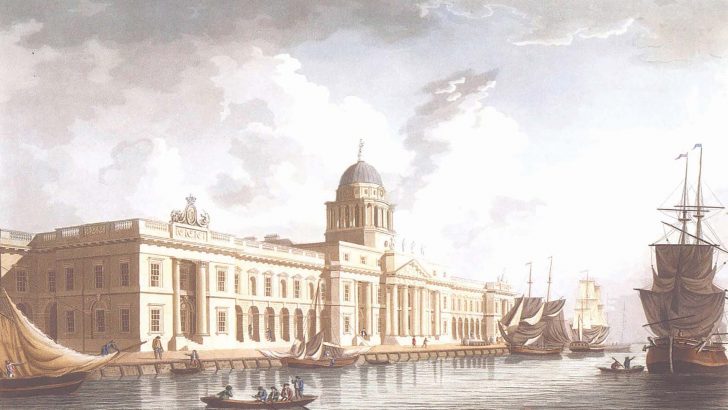The First Irish Cities: an Eighteenth-Century Transformation
by David Dickson (Yale University Press, £25.00/€32.00)
In this study Prof. Dickson selects ten Irish cities and towns, subjects them to a forensic historical analysis and illustrates in meticulous detail their evolution throughout the 18th Century. The urban centres he selects are: Belfast, Cork, Derry, Drogheda, Dublin, Galway, Kilkenny, Limerick, Sligo and Waterford.
Prof. Dickson begins with an account of the ‘walls coming down’. The ten urban communities experienced at least one siege or blockade since 1641 and eight had endured multiple sieges over that time. However, at the beginning of the 18th Century walls and stonework defences had become redundant and by the middle of the century five of the urban centres had demolished substantial proportions of their gates, bastions and defensive walls. Other legacies of the past had also disappeared, such as medieval market crosses and the medieval cathedrals in Cork and Waterford.
Attention
Prof. Dickson next turns his attention to the residents in those cities and towns. By comparing the estimated civilian populations for those cities and towns in 1660 and 1821 he indicates the rapid rise in the number of their residents over that period. He considers the mortality rate in those centres and how it was affected by plagues of infectious diseases and periodic food shortages. However, although life expectancy for people, especially the young, was unfavourable for most of the century, it improved in the final decades. The guilds, who were descended from the medieval guilds of craftsmen, continued to exercise considerable influence at the work place and the community at large. Their role was analogous to present-day trade unions and staff associations. A table comparing the religious composition of citizens in the ten centres in 1660 and 1836 shows the rapid and significant rise in the Catholic proportion of their respective populations.
Catholic merchant families were to the fore in the sea ports of Galway, Limerick, Cork and Waterford. Bishop Berkeley in the Querist (1735) expressed concern about this situation. He worried that thereby they could control the wholesale trade of the country. Prof. Dickson has little difficulty in dismissing such fears as groundless. He compares the commercial and industrial milieus in Belfast and Dublin and concludes that it was not until the second half of the century that the entrepreneurs in Belfast become as progressive as those in Dublin.
Prof. Dickson describes the parallel worlds in which Catholics and Protestants co-existed. He outlines the education provided under the auspices of the Church of Ireland and the other Protestant denominations. The separate worlds were structured by the notorious penal laws. As these were eased towards the end of the century, Teresa Mulally in Dublin and Nano Nagle (later foundress of the Presentation Sisters) in Cork began their respective crusades to make education available to the ‘Catholic poor’.
Law and order were a top priority for the all-Protestant parliament in Dublin. They successfully brokered an agreement with the authorities in London that the bulk of the English standing army be housed and maintained on Irish soil during peacetime. Hence, the huge Royal Barracks built outside Dublin at the beginning of the century. At one time it housed over 4,000 men. Soldiers were also stationed in the other cities and towns across the country. Regulated Police first patrolled Irish streets in 1786.
Riots
Apart from periods of food shortages – 1765-66, 1783-84, early 1790s – serious riots were unusual. However, there was much riotous misconduct. This was generally associated with traditional carnivals, fairs, patterns and faction-fights. In this regard Donnybrook Fair was notorious. An ancient horse and livestock fair, it became a vast site for carnival and sport, drinking, pimping and brawling. On one Sunday in 1790 it was claimed that some 50,000 people were in attendance at the fair, returning to the city ‘like intoxicated savages’.
This book would have been worth publishing for the quality of the illustrations alone. It is the first comprehensive overview of the great age of Irish urban development, in all its complexity, and variety and it will remain the bench-mark for those involved in Irish urban history for many years to come.


 The Custom House Dublin by Thomas Malton
The Custom House Dublin by Thomas Malton 